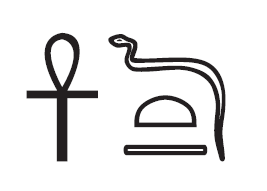Dear Supporters,
I write to you today having just printed a complete draft of the hydra-headed General Introduction to Interlinear Magic. The draft of the Introduction alone is 52,000+ words, which is more than three times as much as I originally intended, and this is the primary reason for the additional delay. I have written much more than I set out to do because the topics I have been addressing have greater depth and often require more explanatory background than I predicted. The Introduction will have its own table of contents that I will release after some editorial restructuring, but I will outline below some of the topics that it covers. Although there remains some writing and editing to be done, the book is now very close to complete and will be ready for proofreading in a matter of weeks.
With that in mind, I have decided to teach only one more course in 2022. For those of you who have already taken Ancient Greek Magic: A Linguistic Approach, you are welcome to take the class again for free, which will cover some new material that I have developed for the book. If you haven’t already taken the course, I am offering it to Kickstarter supporters for the same discounted price as the add-on during the Kickstarter campaign itself: $300 USD (normally $400). Not only will this likely be the only course I teach for the remainder of 2022, it may also be the last time all the class sessions are presented and recorded live. (I am strongly leaning toward prerecording lessons for future courses and meeting via Zoom only for Q&A sessions and the like.) So if you’re looking for a live learning experience every week with yours truly, this will be a good opportunity for you. And if you do need to miss a class or otherwise fall behind in the course, digital recordings will remain available to you for at least one year, enabling you to learn at your own pace.
The present course begins September 17 and runs for ten weeks. To get the Kickstarter discount, you will have to follow the link sent to you in the Kickstarter update email. A full description of the course is available here.
IMPORTANT NOTE: This is NOT the free course (unlocked by the $50K stretch goal) for all Kickstarter supporters. That course will focus more on the PGM in historical context and somewhat less on the ancient Greek language, with little to no overlap in content between the courses. I have already outlined the course content but will be creating video lessons rather than teaching it live, as I don’t think Zoom can handle nearly 800 students. Instead, I will begin to create the video lessons as soon as the book goes to press, and I will release them as I complete each lesson rather than waiting for them all to be complete.
Back to the book then. Beyond the Introduction, which requires a thorough editorial restructuring to make it the most useful, a few of the commentaries to chapters 1-12 need to be finished up, some notes fleshed out, and some translations polished. One effect of the decision to include English translations in addition to the interlinear (Greek and English) versions is that I have been able to approach the former with more freedom while retaining a more literal approach to the latter. This means the English translations have often diverged from their interlinear counterparts in interesting ways, and I have not attempted to “standardize” the English translations as I first intended. Instead, I have embraced the idea that each of the 60 rites will have two translations, a more literal interlinear translation that attempts to be word-for-word (within the limits imposed by the grammatical differences between ancient Greek and modern English), and a less literal but more idiomatic English translation that departs from the Greek in more significant ways. Fear not, however, because if there’s ever a question of how many liberties I’ve taken with the English translation, you can quite easily check the steps of my work by consulting the interlinear translation.
Topics covered by the General Introduction include (in no particular order):
- A Brief History of the PGM
- Egypt in the Greco-Roman Period
- The Major Theological Systems of Egypt (Heliopolitan, Hermopolitan, Memphite, Theban) in the Greco-Roman Period
- Interpretatio Graeca: Egyptian Gods in Greek Translation
- The Living Cosmos in Egyptian religion and Greek philosophy
- As Above, so Below: Cosmic Sympathy and the “Magical Worldview”
- Symbols and Symbol Systems in Greco-Egyptian ritual practice
- Planetary Hours and Egyptian Timekeeping
- Esoteric and Initiated Knowledge in the PGM
- “Barbarous Names” and ancient theories of divine language
- “Add the Usual” – Improvisation in the PGM
Thank you again for your patience and support. This project has proven to be quite a challenge, but it’s the most enjoyment and satisfaction I’ve ever experienced creating anything, and I am confident that the final product will justify the extra time spent on it.
Sincerely,
Brian Alt
